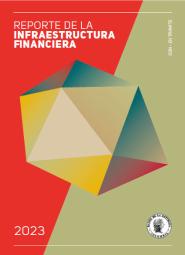Monetary policy in an uncertain environment
Monetary policy should continuously assess the state of the economy, as well as its future developments and prospects over the next four to eight quarterly terms. It is during this time span that changes in interest-rate intervention rates have their effect on other interest rates and have impact on the economy. Therefore, monetary policy necessarily operates in an environment of uncertainty. The following factors contribute to this:
- There is a delay concerning the information available in relation to a number of economic variables,(e.g., GDP) and, in many cases, this information is subject to important revisions and errors of measurement.
- Other important variables (such as the product’s gap or the potential growth of the economy) are not readily available and therefore have to be estimated by means of indirect models and indicators.
- In some cases, it is difficult to distinguish the origin, effects, length and magnitude of impacts affecting the economy. The following are examples of such impacts:
- External exchange rate or capital-flow changes.
- Oil and coffee export-price increases
- Food supply decreases
In addition, the scope and effects of monetary policy are not always predictable, because they depend on:
- Future expectations about the interest rate, exchange rate, economic activity, and inflation performance.
- The time taken for monetary policy to affect the economy. The transmission of policy decisions to the rest of the economy can experience long and variable delays, from between 12 to 24 months.
- The channels used are not always the same, nor is their effect long-lasting. In addition, a changing economy may be subject to new channels that did not exist previously.
- The Bank makes explicit use of its constitutional mandate to achieve and guarantee price stability—the prime objective of monetary policy.
- The Bank announces the inflation targets with sufficient notice thereby enabling economic agents to take them into account in their decision making.
- The bank analyses various economic indicators and uses a wide variety of models with diverse foci (statistical and forecasting, structural and simulation) to strengthen further its ability for making economic forecasts.
- The Bank carries out sensitivity analyses for risk management. It assesses changes in inflation forecasts under different domestic and international scenarios.
- The Bank is well known for having a top class team of economists and other professionals in their field, as well as for keeping up-to-date with the latest developments in economic analysis and techniques in use world-wide.
- The Bank carries out research work, thereby contributing to understanding the way the economy works, as well as developing better analysis methodologies.
- The Bank interacts with other Central Banks and is open to the opinion of the national and international academic communities by means of organising and participating in seminars and forums dealing with subjects that are central to the Colombian and world economies.
- The Bank organises periodical meetings with various sectors of Colombian society (businessmen, employees, Congressmen, etc.) with the purpose of hearing their opinions and of explaining the Bank’s policy-decisions and their results.
- In its policy of transparency, the Bank publishes reports explaining decisions on monetary policies. This is done by means of the following channels of communication:
- Consumer and producer price series
- Measures related to basic inflation core inflation
- Production and cost indicators
- Price series on money, credit, interest rates, and asset prices
- International economic indicators: world growth rates, including those related to the Bank’s main commercial partners, as well as foreign liquidity and interest rates.
- Economic activity and employment
- Monetary and exchange rate policy
- Fiscal policy
- Balance of Payments
- Level and management of international reserves
- Financial situation of the Banco de la República
- Food prices
- Some regulated prices (fuels, utilities, transport)





















































